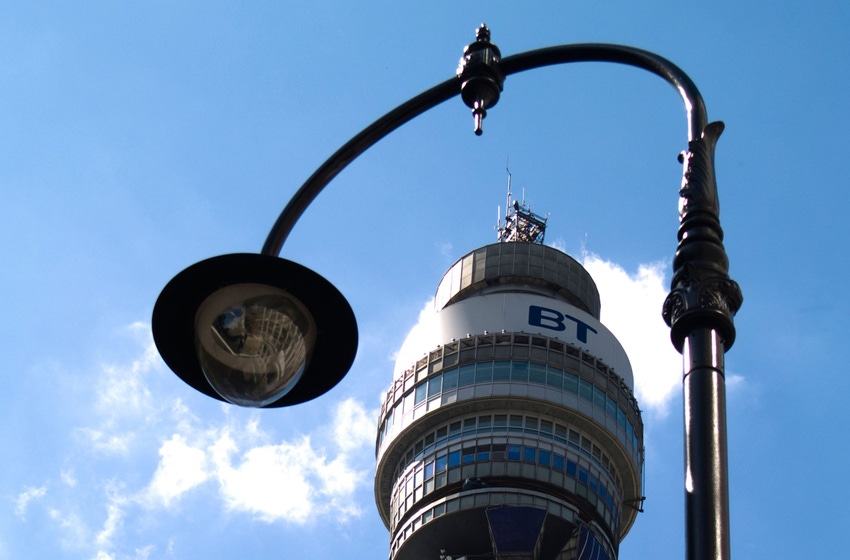BT teases 5G SA progress with wideband FDD trial
UK incumbent BT has been playing around with various combinations of its sub-6-GHz spectrum as it inches towards rolling out 5G standalone (SA).
August 10, 2023

UK incumbent BT has been playing around with various combinations of its sub-6-GHz spectrum as it inches towards rolling out 5G standalone (SA).
Together with Ericsson and MediaTek, BT said on Thursday that it has successfully transmitted 5G data in a wideband frequency division duplex (FDD) carrier. More specifically, it used 2×50 MHz of its 2.6 GHz spectrum, and as everyone surely knows by now, more spectrum equals a faster connection.
It also tried out downlink aggregation of two time division duplex (TDD) carriers using an unspecified amount of its 3.5-GHz spectrum.
But it’s the wideband FDD trial and its implications for uplink speed that BT seems particularly excited about, pointing out that it represents a three-fold increase in uplink bandwidth on a single FDD carrier.
The reason for the excitement is because 5G SA specifies a single carrier for the uplink, and so it has the potential to become a bottleneck if lots of end users – be they consumers, enterprises, or IoT devices – want to upload vast quantities of data to the cloud, for example.
“As network quality and accessibility improve, so too will innovation and the 5G services ecosystem,” said BT’s chief networks officer Greg McCall, in a statement. “Demonstrating new network capabilities such as those announced today is critical to achieving this goal, and also paves the way to ensuring that 5G SA delivers new possibilities for our customers.”
Far from being a lab-based endeavour, the demo took place on BT mobile arm EE’s live networks in Bristol and Potters Bar, using commercially-available Ericsson hardware. Wideband FDD was switched on by enabling a software feature called ‘Large Bandwidth Support Low-Band’.
“This is a great step forward for the deployment of 5G standalone for EE in the UK,” said Evangelia Tzifa, CTO, networks and managed services, for Ericsson UK and Ireland. “Ericsson innovative software capabilities such as large bandwidths for NR (new radio) FDD as well as NR carrier aggregation enable a solid foundation for improved end user experience and network performance.”
The test was carried out using handsets equipped with MediaTek’s M80 Release-16 modem.
“This remarkable achievement of boosting uplink capacity is a fundamental step for the evolution from 5G non-standalone to 5G standalone networks. By supporting an uplink connection in a single FDD carrier with a wider bandwidth, MediaTek Dimensity 5G chipsets already meet the surging demand for uplink data in a new era of mobile applications,” said Ho-Chi Hwang, general manager of wireless communication systems and partnerships at MediaTek.
Interestingly, BT didn’t say how the network performed in terms of throughput speed. Nor did it provide an update on when it expects to go live with standalone.
Reports in spring 2022 said BT was eyeing Q1 2023 for the commercial launch of its 5G SA network. In addition, last August it announced the successful trial of four carrier component (4CC) aggregation in partnership with Nokia, on a live 5G SA network using its low and mid-band spectrum.
Here we are 12 months later, and EE still hasn�’t launched its new network. That doesn’t necessarily make EE a laggard, given how slowly the global rollout of 5G SA is proceeding.
However, in the UK it has been beaten to market by staunch rival Vodafone. That’s not a great look for the operator that launched the country’s first 4G network, followed it up with the first 5G network, and has traditionally differentiated itself on network quality and coverage.
Get the latest news straight to your inbox. Register for the Telecoms.com newsletter here.
About the Author(s)
You May Also Like











_1.jpg?width=300&auto=webp&quality=80&disable=upscale)


.png?width=800&auto=webp&quality=80&disable=upscale)